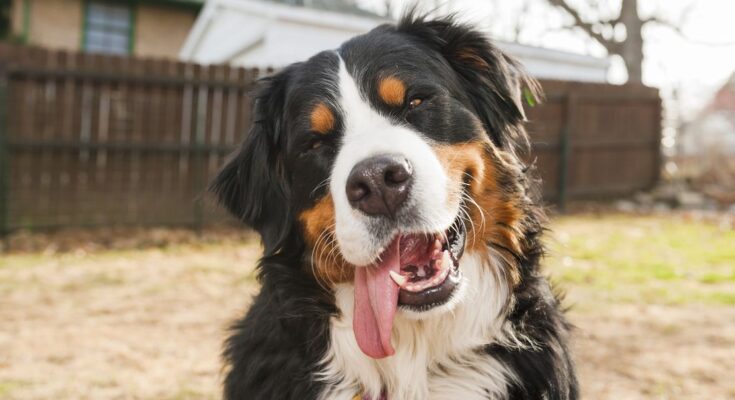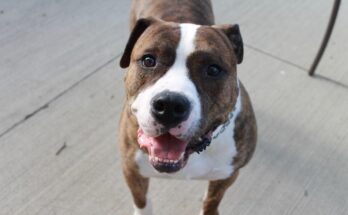Would you like to add a dog to your family? Dogs are loyal and affectionate companions who typically give us far more than we give them. However, they require great care to remain healthy and content. There is no one-size-fits-all way to care for all pets, as each dog and situation is unique. For instance, some dog owners keep their pets indoors, while others keep them outside in kennels. Although you have complete freedom over your dog’s care, you’re responsible for making all reasonable efforts to meet their requirements.
There are numerous factors to consider before welcoming a dog into one’s home and ensuring a mutually beneficial relationship that lasts. This post will discuss several professional tips you can incorporate into your dog’s care routine to enhance its health and welfare. Please continue reading to discover more.

1. Keep a Close Eye on Your Dog’s Feeding Habits
You should monitor your dog’s dietary intake by measuring the food they consume periodically. The ideal feeding period for a dog is 10 to 15 minutes, after which you should remove the bowl until it’s time for the next meal. If they do not consume the entire food at this feeding, they will be hungrier and more likely to do so at the next meal.
Keeping an eye on your dog’s weight and general health will help you determine if they are receiving enough to eat. Unless your dog is of a very slim, athletic breed, seeing its ribs is an immediate sign that it isn’t getting adequate food. Furthermore, if you cannot feel their ribs, they may be overeating. You should consult your veterinarian if you are concerned about your dog’s weight or appearance.
Having animal feed readily available, or “free feeding,” might make eating for your pets convenient, but it is not recommended. One dog could gain weight if they are a good eater, while the picky eater misses out and becomes malnourished. It would be best to maintain a consistent feeding schedule for each dog.
If your puppy is getting too fat, you may need to change their diet and activity habits. Talk to your vet first before making any significant modifications. It’s a great idea to transition your dogs to a senior diet at around eight years old. An aging, less active dog can benefit from this since it helps them avoid the risk of overeating. You should also ensure your dog has access to clean water.

2. Ensure your Dog Receives regular Veterinary Check-ups
Routine veterinary check-ups could help prevent or detect issues before they become serious. The pet physician can suggest examinations, such as physical examination, feces inspection, and heartworm test, to assess your pet’s health. Your veterinarian may also recommend periodic blood tests to detect hidden health problems that are best handled in the early stages. Your veterinarian could also suggest heartworm preventative, deworming procedures, and flea and tick control products on a seasonal or regional basis.
Furthermore, ensure your dog receives all required immunizations, contributing to their continued well-being. Rabies vaccinations, which are required by law in some areas and recommended by veterinarians, are among the regular immunizations for dogs. They are given at 12 weeks or older and once every year or three years. Typically, parvovirus, distemper, and hepatitis are administered simultaneously. Depending on your veterinarian’s instructions, puppies should receive four shots every three weeks at six weeks of age and then yearly.
3. Exercise them Regularly
Like people, pets need regular exercise or risk getting out of shape. Providing your furry friend with at least an hour of vigorous exercise on as many days of the week as possible can help prevent a wide range of behavioral and medical issues. Alternatively, you can split the hour-long event into three or four shorter bursts of enjoyment. For instance, take a 15-minute stroll around the neighborhood first thing in the morning. After a long day at work, unwind by tossing the ball around in the backyard. Then, after dinner, lead everyone on a 30-minute neighborhood stroll.
Exercise your dog’s mind, too, as it helps minimize negative behavior. Fifteen minutes of mental activity is equivalent to one hour of vigorous physical activity for their mental health. Pets are less likely to exhibit negative behavior if they constantly participate in productive mental activity. For instance, you can use a pet food dispenser ball to give your pet its meals. Give your pet the freedom to explore the yard and locate its food by scattering a handful of treats.
You can also ensure your dog exercises regularly by taking it to a dog park and allowing it to play with other dogs. In addition, practice fundamental obedience (sit, stay, and down) at least once or twice daily for ten minutes.

4. Obtain Pet Insurance
All dog owners should strongly consider purchasing pet insurance. It will protect you from paying for emergency veterinary treatment and allow you to give your dog the best medical attention. Not all pet insurance providers are the same, despite the variety of plans and companies available. Please avoid choosing an insurance policy based on pricing because some providers include time or monetary claim limits. You should also consider purchasing Third-Party Liability insurance if your dog causes an accident.
5. Provide High-quality Foods
It would be best to prepare homemade dog food if possible. If not, choosing a dog food brand that uses only premium ingredients is best. Avoid giving your dog junk food, especially sugary or fried items, as they are bad for your dog’s health in the long term. Don’t give your dog chocolate, grapes, garlic, onions, raisins, or xylitol-containing products (found in many sugar-free items).
Large-breed puppies should eat a large-breed puppy formula until they reach about a year old. Feed puppy food specifically formulated for small and medium breed dogs until they are about a year old, and then transition them to an adult diet. After that, they can feed like adults until they’re about six and then transition to a senior diet.

The Bottom Line
Being a responsible dog owner involves more than simply providing nutritious food – it’s about ensuring your dog has everything to lead a comfortable and healthy life. Ensuring your furry friend has access to quality healthcare is also one of the best ways to show your dog, young and old, how much you care about them. Moreover, remember that small puppies will grow into adults. Therefore, do not reward or reinforce behaviors in your puppy that you find unacceptable in a full-grown dog.




